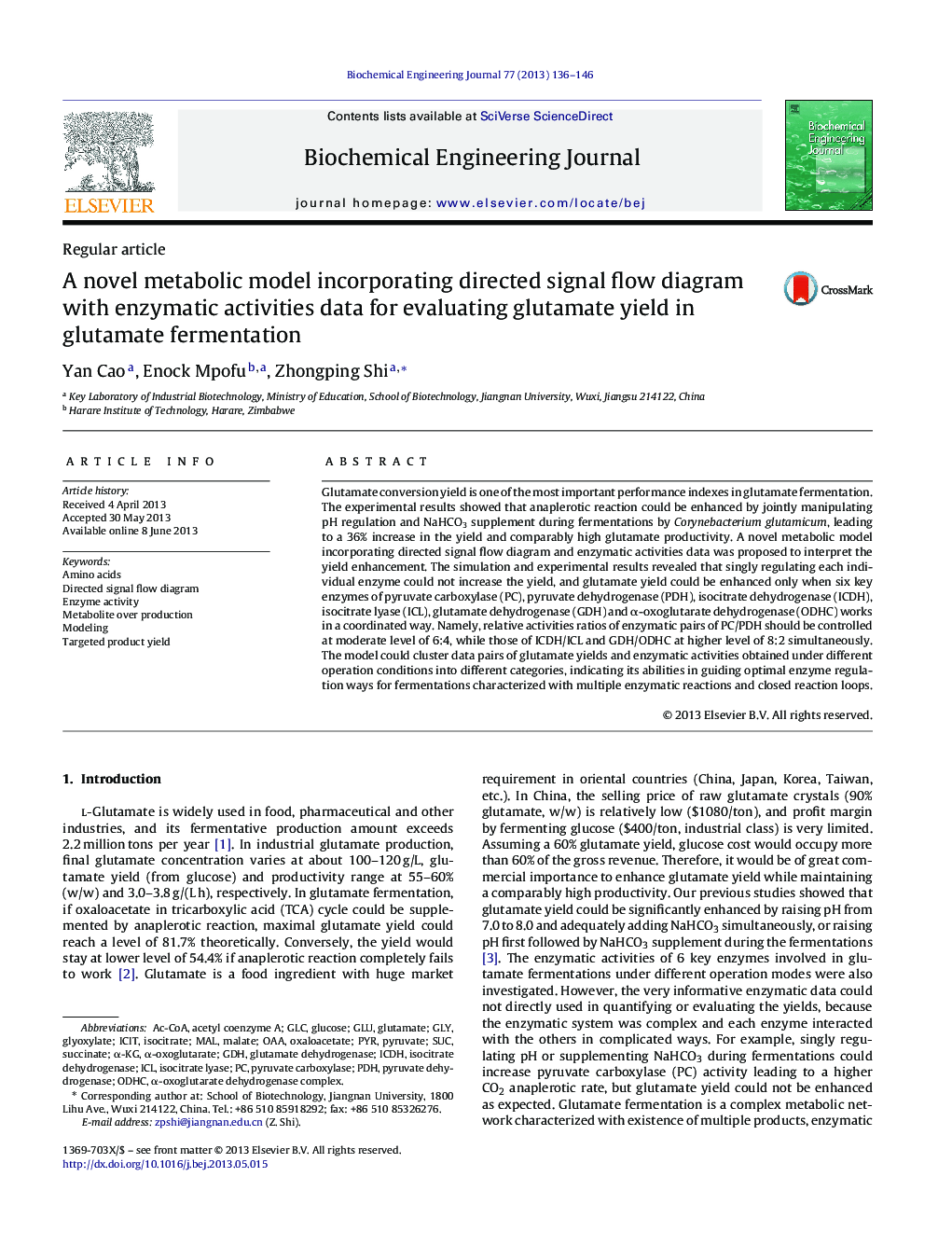| Article ID | Journal | Published Year | Pages | File Type |
|---|---|---|---|---|
| 6484112 | Biochemical Engineering Journal | 2013 | 11 Pages |
Abstract
Glutamate conversion yield is one of the most important performance indexes in glutamate fermentation. The experimental results showed that anaplerotic reaction could be enhanced by jointly manipulating pH regulation and NaHCO3 supplement during fermentations by Corynebacterium glutamicum, leading to a 36% increase in the yield and comparably high glutamate productivity. A novel metabolic model incorporating directed signal flow diagram and enzymatic activities data was proposed to interpret the yield enhancement. The simulation and experimental results revealed that singly regulating each individual enzyme could not increase the yield, and glutamate yield could be enhanced only when six key enzymes of pyruvate carboxylase (PC), pyruvate dehydrogenase (PDH), isocitrate dehydrogenase (ICDH), isocitrate lyase (ICL), glutamate dehydrogenase (GDH) and α-oxoglutarate dehydrogenase (ODHC) works in a coordinated way. Namely, relative activities ratios of enzymatic pairs of PC/PDH should be controlled at moderate level of 6:4, while those of ICDH/ICL and GDH/ODHC at higher level of 8:2 simultaneously. The model could cluster data pairs of glutamate yields and enzymatic activities obtained under different operation conditions into different categories, indicating its abilities in guiding optimal enzyme regulation ways for fermentations characterized with multiple enzymatic reactions and closed reaction loops.
Keywords
Related Topics
Physical Sciences and Engineering
Chemical Engineering
Bioengineering
Authors
Yan Cao, Enock Mpofu, Zhongping Shi,
